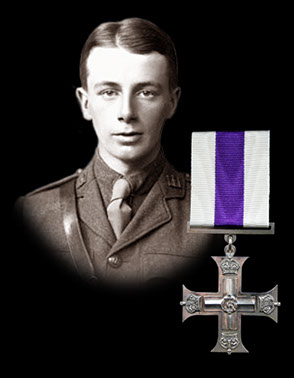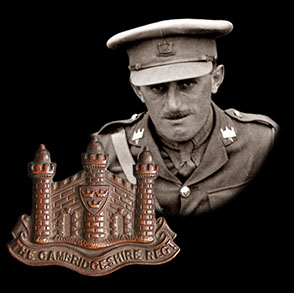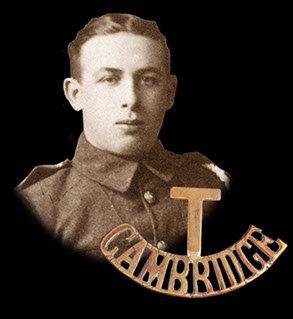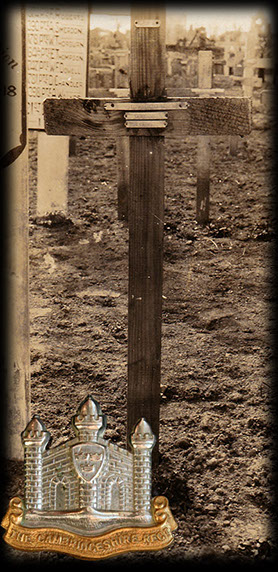
Who Were
The Cambs
The Cambs
at War
1/1st Btn 1914-1919
1914 - 1/1st Overview
1915 - 1/1st Overview
1915 - St Eloi
1915 - Fosse Wood
1916 - 1/1st Overview
1916 - The Schwaben
1916 - St Pierre Divion
1917 - 1/1st Overview
1917 - St Julien
Insignia, Medals & Books
Remembering The Cambs
Biographies
About Us &
This Site
The Attack on Nurlu – 5th to 6th September 1918
The news that Lt Col Edward Saint DSO had succumbed to his wounds on August 29th reached the Battalion on September 2nd. It came as a great blow to the Cambridgeshires, but given how bad his injuries had been it was not a surprise. His successor, Lt Col Muirhead Clayton DSO, had known him longer than any other officer still serving in the Battalion and felt his loss deeply. However there was little time to dwell and, after another day training and reorganising, they were on the move again. Late on September 4th the Cambs moved up as brigade reserve near Sailly Sallisel and Lt Col Clayton was quickly summoned to Brigade HQ – something that could really only mean one thing, it was time for another attack.
At 3.45am, within hours of Lt Col Clayton being informed of the attack, the Cambridgeshires formed up and began a long and tricky nighttime journey to their assembly positions. Heavy enemy shelling and a thick blanket of mustard gas further complicated the pitch-black journey over unfamiliar ground, however, eventually, the men arrived and the final preparations were made.
In an unfortunate combination, the overall plan of attack given to Clayton was rather complicated but also lacking detail. The Cambridgeshires were tasked with attacking the village of Nurlu, with the Norfolks and Essex advancing first off to the left. An hour after the initial advance the Cambridgeshires were to assault the village, with B Coy advancing straight at the village from the west, D Coy from the south and A Coy from the north. There was little in the way of artillery available, instead they were to rely on numerous machine guns that were to cover the village with both direct and indirect fire – however these would be no assistance with the thick belts of wire that surrounded the village.
At 6.45am the main attack started and the Cambridgeshires faced a tense one-hour wait for their turn. By the time the whistle finally blew and the Cambridgeshires advanced, much of the dawn mist that had smothered the village had lifted. Without this as cover and with only a light artillery bombardment the advancing men were clearly visible to the German garrison, who were now fully alert and expecting the attack. Advancing on the village from three directions the Cambridgeshires initially made steady progress, despite the increasing volume of fire from the defenders.
D Coy, advancing from the south, managed to clear several outposts, killing or capturing the occupants, before scrambling up the ridge. Ahead they found the way completely blocked by thick belts of barbed wire with numerous machine gun positions beyond. A Coy, who were working their way towards the north of the village, met with a similar situation and their advance was also stalled.
B Coy, under the command of Lt Douglas Orbell, initially made good progress, clearing several outposts and working their way up the slope to the west of the village. To their front lay a wide flat plateau of mostly open ground, beyond which the ground dipped before climbing back up to the village. The men of B Coy made their way across the plateau, but when they had nearly reached the eastern edge they were now the perfect target for the waiting defenders, who soon unleashed a devastating hail of fire. In the face of this withering fire and as numerous men fell, including Lt Orbell, the men faltered. In an attempt to get the men advancing, 2nd Lt George Nock, the last remaining officer, yelled to advance and charged forward. In the chaos some followed his lead, but this last dash was soon cut down by machine gun and rifle fire. Having suffered heavy losses, including many NCOs and all their officers, B Coy went to ground. The three-pronged attack on the village had now completely halted.
Due to the difficult terrain and accurate sniper fire, getting news back as to what had happened to the three Coys was no easy task. Slowly news trickled back to Clayton and the details of the morning’s attack became clear. Clayton knew that, in the current situation, any further attempt to breach the wire would be catastrophic for his Battalion. For the rest of the day the men worked to consolidate their positions but no further attempts on the village were made.
After a day of frustrating communication problems, late in the evening orders came through to attack again in support of an attack off to the right by the 36th Brigade. There was no way the men were in position to attack and there was no time to make further arrangements, however the enemy struck first and launched a counter attack off to the Cambridgeshires’ left, thankfully halting the attack in the area before it had even started.
Under the cover of night the survivors from B Coy, who had been trapped on the plateau for the day, were successfully withdrawn. D Coy was also pulled back and C Coy, who had been in reserve, were moved up behind A Coy to the north of the village. At 5.45am orders came through to attack again. This time the Royal Berkshires would assault the village from the south and the Cambs would focus on the positions north of the village. Clayton tasked A Coy with taking and clearing a strongpoint to their front. C Coy would then move through them and push on to the ridge northeast of the village.
The German garrison had also used the cover of night to reorganise and had largely abandoned their positions around Nurlu. At 8am the Cambridgeshires attacked, A Coy charged the strongpoint and the depleted garrison fled. C Coy then pushed through, making the 1000-yard advance to the Nurlu-Fins road that ran along the ridge. The few scattered defenders either ran or were quickly dispatched. Within minutes of reaching the road a heavy German artillery bombardment started crashing down on the men with alarming precision. Thinking quickly, Capt “Chick” Warren pushed his men on, around 150 yards further east, after which they dug in with the enemy bombardment passing safely over them.
The attack on September 6th had been a complete success and the 5/Royal Berks had successfully cleared the village. Soon the enemy was retreating again and the line moved forward. The Cambs remained in their captured positions and the Coys were even able to move back in turns for a swim in the nearby canal. With the fighting now moving east, this pause near to the ground they had just attacked gave the Battalion time to recover their fallen. Lt Orbell and the dead from B Coy were found strewn across the plateau where they had fallen. The bodies were recovered under the supervision of the Padre, Rev "Jerry" Walters MC, and were buried in the village churchyard. The attack cost the Battalion 29 officers and men killed and over 70 wounded.
Over the course of the next week the Cambridgeshires remained bivouacked near to where they had assembled for the Nurlu attack. Drafts of replacement officers and men arrived from England and training for all ranks became more intense. During this time the advance had continued and had now, finally, reached the German line of defences called the Hindenburg Line. Detailed plans were being drawn up for the next attack and, once again, the 1/1st Cambridgeshires would find themselves with yet another fortified village to attack.
In the summer of 1919, during the Grave Registration Unit’s burial concentration and recovery work, the bodies of the fallen buried in Nurlu churchyard were exhumed and moved to the larger Peronne Communal Cemetery Extension. By chance one of the Labour Corps men who carried out this duty was a native of Cambridge named James Hoy. On seeing the names of so many of his potential townsfolk he wrote to the local newspaper in order to inform relatives where their loved ones had now been laid to rest.

Capt Alec Johnson, CO of A Coy, awarded the MC for his leadership and gallantry at Nurlu.

Lt Douglas Orbell, KiA while leading B Coy during the attack across the plateau.

Percy Doggett, one of the men from B Coy KiA on the plateau east of Nurlu.

Percy Doggett's Grave Registration Unit cross shortly after the bodies were moved to Peronne Communal Cemetery Extension.

This site went live on the 14th February 2015 to mark 100 years since the 1/1st Cambs went off to war.
WE WILL REMEMBER THEM
Email us: cambsregt@gmail.com
Copyright 2015, 2016, 2017, 2018, 2019 by Felix Jackson. The information and images on this site should not be reproduced without prior permission.